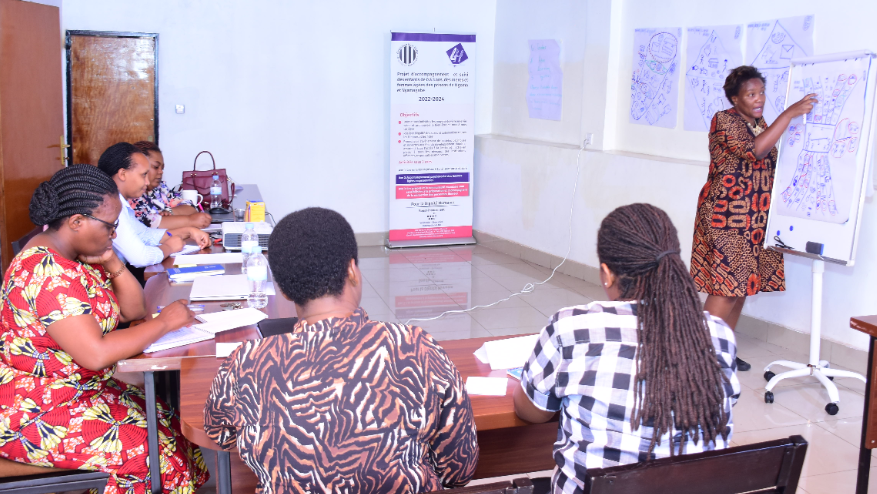For a long time, Rwandan society was characterized by unequal social power relations between men and women, boys and girls. These relations were translated into male‘s dominance and women’s subordination. Although the Government of Rwanda has policies and laws in place to protect women’s rights, prevailing gender and social norms and customary rules make it difficult for women to access opportunities for value addition and technological improvements. Women spend more time in unsalaried farming activities than men, still they own smaller plots, have fewer assets and control over income. Furthermore, women are facing gender issues more than men, because women are most involved in agriculture value chain, and in unpaid care works.
For decreasing gender issues in community, DIDE has organized training session emphasizing on gender through using GALS (Gender Action Learning System ) for helping staff to understand well gender concept, and to link it to agriculture sector as DIDE is extending its activities for dealing on issue of high number of imprisonment cases through mitigation/ prevention to the issue.
GALS methodology has been developed under Oxfam’s Women’s Empowerment Mainstreaming and Networking (WEMAN) programme since 2008 with Linda Mayoux and partners in Uganda, Sudan, India and Peru.
This training has been organized by DIDE, purposely for increasing staff’s knowledge about gender through using GALS (Gender Action Learning system). Training took 2 days from 13rd to 14th October, and the participants were 8 staff including 6 women and 2 men.
Definition of GALS in local language Kinyarwanda
During this training, we have emphasised on the following tools:
Tool 1: Diamond dream
Objective of the tool: This tool helps women and men, to exhange on what they like and what they displeasure. The purpose is to encourage the change between men and women, through sharing of what they like, and dislike one to another, and make commitment of maintaining what they like, and discourage what they displeasure.
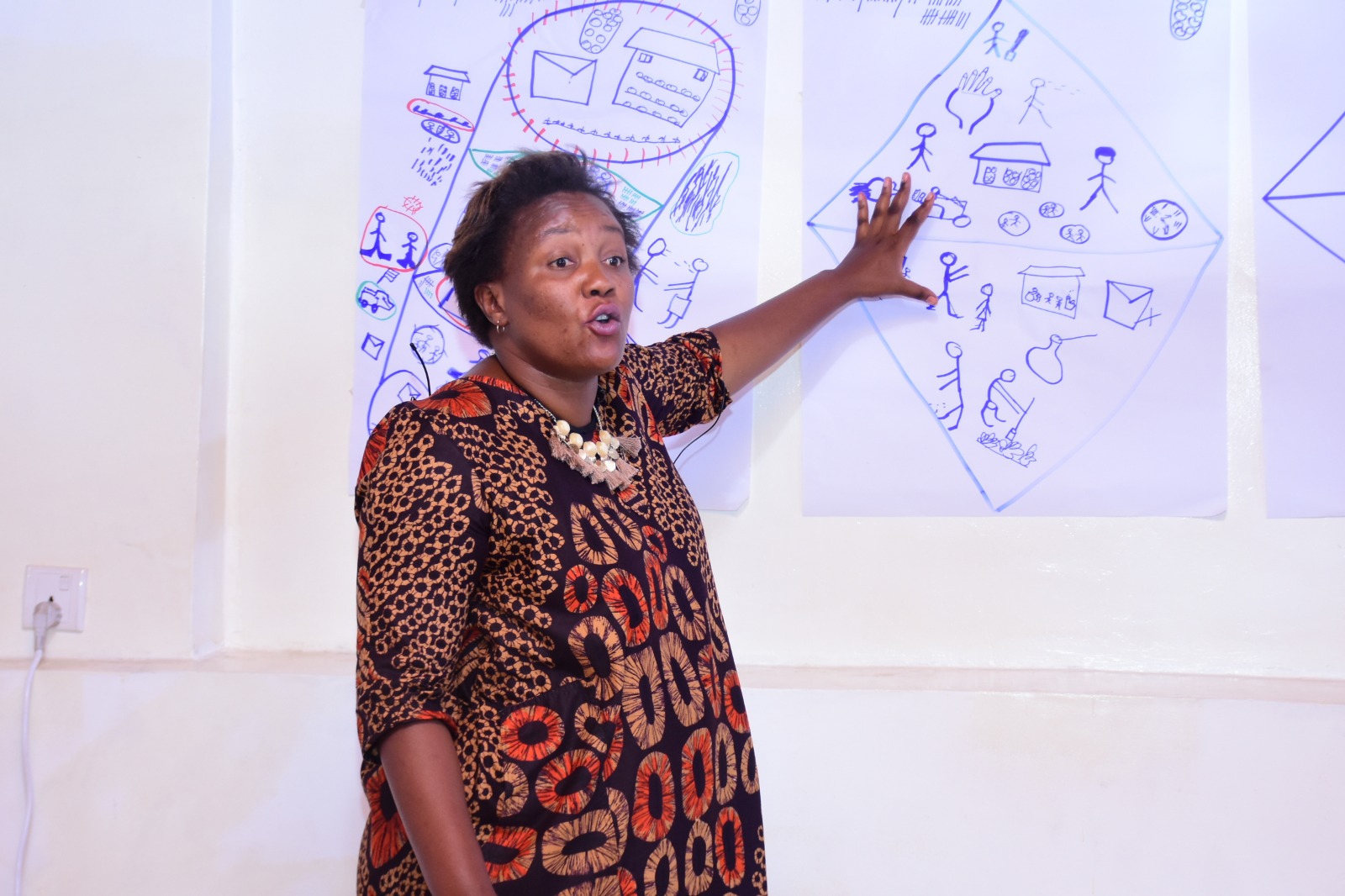
Figure 1: Diamond dream tool developed by DIDE staff, October 2023
Examples of what women and men like related to agriculture of Irish potatoes:
Women like to men: Working with energy, good collaboration, provision of good ideas, no causing of conflict, peaceful, facilitation in transport of production, playing key role in different committee of cooperative.
Men like to women: Keeping well seeds, good participation in initial steps of agriculture value chain, and making saving of money.
Examples of what women and men dislike related to agriculture of Irish potatoes:
Women dislike to men: Selfishness, brutality, no participation in unpaid care work, no giving to women financial access, using of alcohol which affect cooperative work, resistance in doing some activities.
Men dislike to women: Causing the conflict, careless, and no respect of time.
Key lessons from this tool
![]() Dialogue for resolving issues which affecting good relation of couples,
Dialogue for resolving issues which affecting good relation of couples,
![]() Maintain what women and men like to each other, for working together,
Maintain what women and men like to each other, for working together,
![]() Stopping doing what women and men dislike to each other, for also working together,
Stopping doing what women and men dislike to each other, for also working together,
![]() Promoting mutual collaboration.
Promoting mutual collaboration.
GALS Tool 2: The Vision Road Journey
Objectives
The vision road journey produces a plan to help people work towards one realizable element of their vision. It provides the reference point and rationale for examining gender opportunities and constraints and peer training necessary to achieving this vision in the subsequent tool.
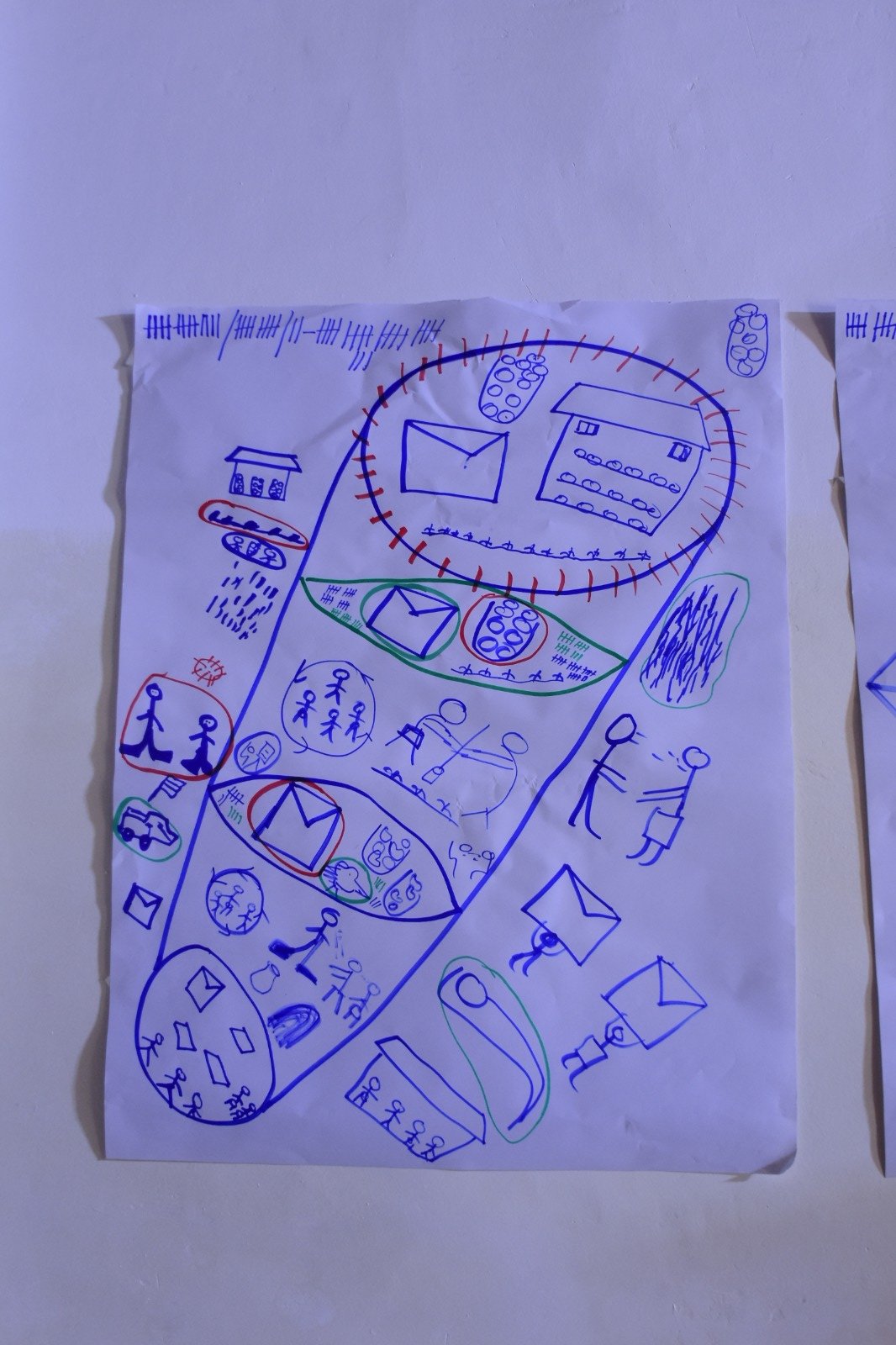
Figure 2: Vision Road Journey, developed by DIDE staff, May 2023
Examples given in tool:
Vision of the cooperative members for improving their cooperative: Increasing of their saving, improving of Irish potatoes production, extending cooperative’s land, and building house for seeds multiplication.
In initial situation of cooperative members: No collaboration of women and men, small saving on cooperative bank account, scattered and small land.
Existing opportunities in their community: market of Irish potatoes production is available, fertile land, working in cooperative, having good weather, collaboration with agronomist, having security in our Country, working with partners/ NGO, and having cooperative bank account.
Challenges which can ban achieving of objectives: Climate change, conflict in cooperative related to using of financial means, wasting money in unnecessary things, illness of some cooperative members, and overload family.
Plans for one year: Increasing of saving, improving of agriculture production, and extending land.
The strategies for achieving plans of one year: Being part of rotating credits, improving of women and men’s collaboration, and continue learning through participating in different trainings.
Plans of six months: increasing of saving, having of small animals, start improving of production.
The strategies for achieving plans of six months: Saving, good collaboration with sector agronomist, using of medicine in case of crops illness, and preparation& using of compost.
Key lessons from this tool
![]() In life, having achievable vision.
In life, having achievable vision.
![]() Conduct a self-assessment of where you are, this assessment helps during planning.
Conduct a self-assessment of where you are, this assessment helps during planning.
![]() Planning in short time, for hard working, and fight for achievement of the plans.
Planning in short time, for hard working, and fight for achievement of the plans.
![]() Elaboration of the strategies which help to achieve the short plans.
Elaboration of the strategies which help to achieve the short plans.
GALS Tool 3: The gender balance tree
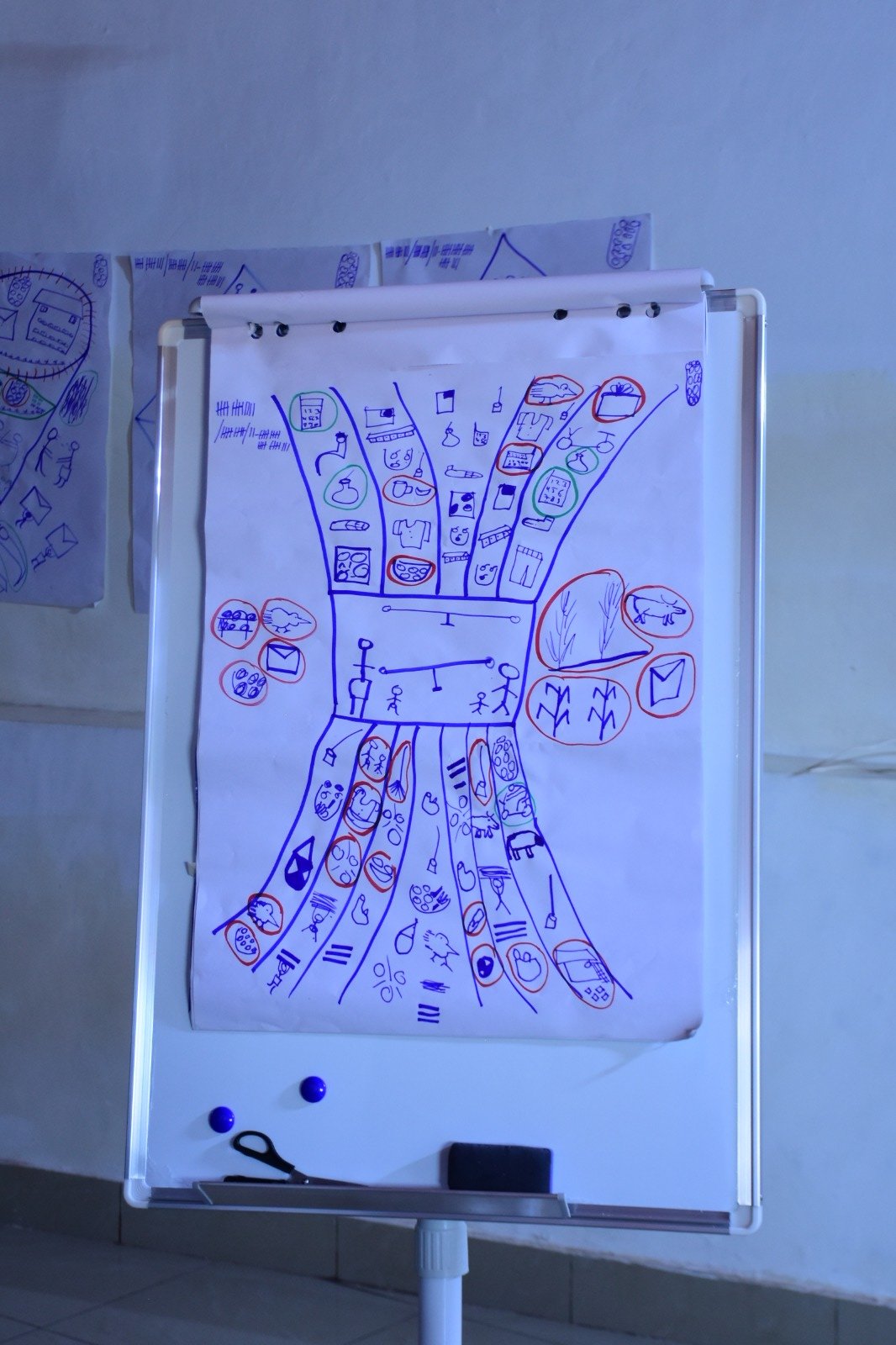
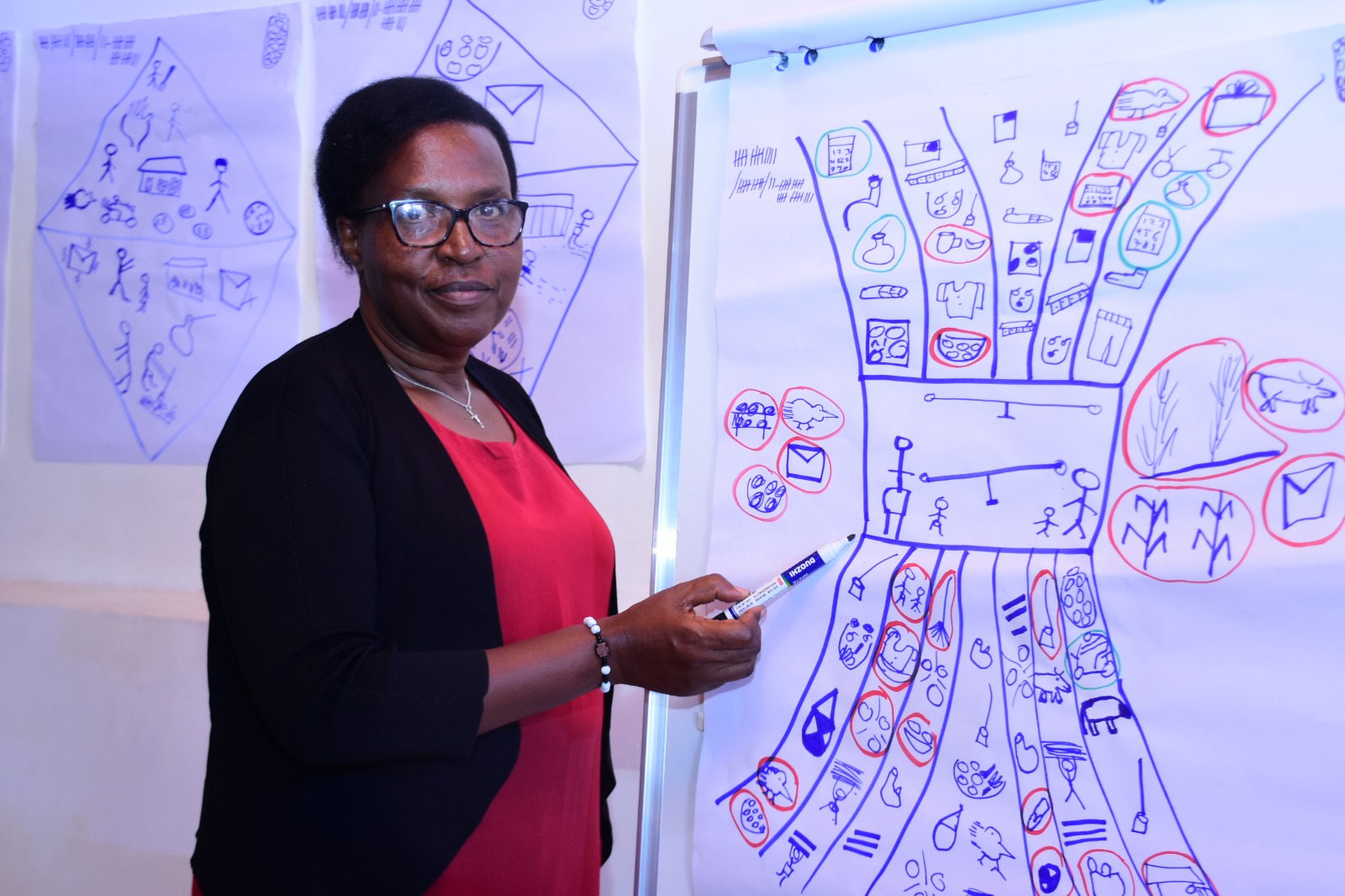
Inequalities between women and men within households are a key causes of imbalances and inefficiencies in the household which make them fail. Often women and men do not work equally, leading to inefficient division of labor inputs to the tree. Women and men may not benefit equally in the fruits and unproductive expenditures may cause the tree to fall over. The household tree’s trunk is often made to bend one way or the other because of inequalities in asset ownership and because decisions are not shared.
Objectives
The gender balance tree is a powerful way of consolidating into one tool information often collected by other gender tools such as access/control profile and time schedule.
The tool does not stop at analysis. It also focuses on identifying immediate and longer-term action commitments of participants can make to improve the gender balance and increase household wellbeing through more efficient division of labor, more productive expenditure, more equal distribution of ownership and decision-making.
Examples given in tool:
In trunk: A woman, and a man.
Root 1 of a woman for income generating activities: business related to agriculture, small business of vegetable, handcraft, business of selling small animals, and selling of eggs.
Root 2 of a woman for non-income generating activities: Caring of children, washing clothes, cooking, searching of feeds for animals, collection of cooking woods.
Root 1 of a man for income generating activities: Selling of Irish potatoes, business of transporting production, handcraft, business related to agriculture, house construction.
Root 2 of a man for non-income generating activities: Agriculture in family land, livestock, reparation of family house, collection of cooking woods.
Root of a girl: Cleaning of house, cooking, washing plates, fetching water, and collection of cooking woods.
Root of a boy: Collection of cooking woods, cooking, fetching water, cleaning of shoes, and entertainment.
Branch 1 of a woman as individual expenses/ buying of: clothes/ kitenge, shoes, beer, caring hair, and telephone airtime.
Branch 2 of expenses done by a woman to her family/ Buying of: Food, clothes, kitchen materials, seeds; paying of school fees, and health insurance.
Branch 1 of a man as individual expenses/ Buying of: Clothes, shoes, telephone airtime, beer, bicycle, gift for other wives.
Branch 2 of expenses done by a man to his family/ Buying of: Seeds, radio, small animals, paying for school fees of children, health insurance, agriculture expenses.
Beside branches/ Properties of a woman and a man
Beside branch of a woman/ her properties: kitchen garden, small animals, vegetable plantation, and saving.
Beside branch of a man/ his properties: Forest, maize plantation, cow, and saving on bank account.
Fruits/ gender lessons/ engagements:
In roots
Woman has committed to help her husband: in facilitating transport of production, construction/ reparation of house, participating in agriculture activities, and collection of cooking woods.
Man has committed to help his wife: in business related to agriculture, selling of eggs, caring of children, washing clothes, and cooking.
In branches/ commitments
Branch 1 related to expenses of woman: Woman has committed to reduce drinking beer, and reducing of buying unnecessary telephone airtime.
Branch 1 related to expenses of man: Man has committed to reduce buying of unnecessary telephone airtime, reducing of drinking beer, and stop giving gift to wife of others but giving it to their own wife.
Branch 2 of woman/ Man has committed to support his wife to buy: foods for all family members, and participating in washing kitchen materials.
Branch 2 of man: Woman has committed to help her husband in buying of radio, and buying of small animals.
Besides of trunk/ giving full rights of properties to each other
Beside branch of a woman/ properties: Woman gave full rights to her husband on what she was calling her own properties: vegetable plantation, saving, small animals, and kitchen garden.
Beside branch of a man/ properties: Man gave full rights to his wife on what he was calling his own properties: Forest, maize plantation, saving, and cow
Clarification: Red color means full engagements, green color means no full engagements
Key lessons
![]() Helping each other/ sharing of role and responsibilities, a woman to help her husband; a man to help his wife to do income and no income generating activities. This sharing encourage living in harmony of couples, and increase love.
Helping each other/ sharing of role and responsibilities, a woman to help her husband; a man to help his wife to do income and no income generating activities. This sharing encourage living in harmony of couples, and increase love.
![]() Stopping or reducing to do unnecessary things/ unnecessary expenses, for keeping it to improve agriculture activities.
Stopping or reducing to do unnecessary things/ unnecessary expenses, for keeping it to improve agriculture activities.
![]() Giving full rights, a woman gives full rights on properties to a man; and a man gives full rights on properties to a woman, in gender this is very crucial because it encourages living in harmony, working together, and taking joint decision.
Giving full rights, a woman gives full rights on properties to a man; and a man gives full rights on properties to a woman, in gender this is very crucial because it encourages living in harmony, working together, and taking joint decision.
Conclusion
Gender equality can be achieved when all barriers banning everyone (women and men; boy and girl) are no longer exist. In our society, we have to deal with barriers which ban everyone to participate for making possible gender equality. Thus, GALS methodology has played key role in reducing gender issues through analysis of its tools for enabling women and men to take engagements. Let’s continue using GALS to make changes.

